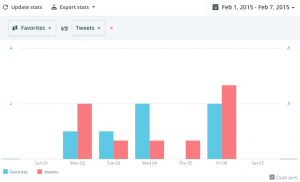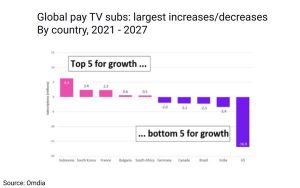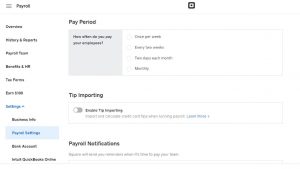— August 25, 2018

Ask the right questions to avoid hiring Reluctant Employees.
When it comes to agency hiring, one of the biggest risks is hiring someone who can do the job, but doesn’t want to do the job you need them to do—I call these types of hires a “Reluctant Employee.”
If you need someone focused one way, and they want to focus the other way, they are not going to succeed in the position. And eventually you’ll probably need to fire them, if they haven’t unhappily quit first.
In this Part 1 article, I’ll share how to avoid hiring Reluctant Employees at your agency. Next week in Part 2, I’ll share what to do if you realize a current employee is a Reluctant Employee.
Definition of “Reluctant Employee”
A reluctant employee is someone who can do the job but doesn’t want to. Note that you, as the boss, define the job.
Hiring a reluctant employee can create all kinds of problems for you. The employee isn’t doing the job you need them to do—which hurts productivity—and the restless employee tends to interfere with their coworkers’ duties—which hurts morale for the rest of the team.
This is riskiest when a job has a mix of roles, especially when the job title means different things at different agencies. For instance, a Project Manager at a big agency might be 100% internal—while a smaller agency might have PMs do a mix of internal and client-facing work.
How to avoid hiring Reluctant Employees: Ask this key interview question
How do you mitigate this risk? By asking candidates a key question during the hiring process. Specifically, ask:
“This job includes 3 types of work: X, Y, and Z. What’s your ideal percentage split between the 3 worktypes each week?“
Then, bite your tongue and listen to their answer… and how they answer. (More on that below.)
Tips to customize the question to each job
The three specific worktypes you’ll mention will vary by role. For example:
- If you’re hiring a Front End Developer, their work types might be design, front end development and client interaction.
- Hiring a Designer, you might ask about their split between conceptual design, production design and client interaction.
- For a Backend Developer, it might be doing new development, doing maintenance and doing say, front end development if they also have that skillset.
- For a Salesperson role, the worktypes might be prospecting, followups on inbound leads, and upselling current clients.
- Hiring an Account Manager, the worktypes might be client service, project management, and sales (or at smaller agencies: account management, project management, and client strategy).
- Hiring an Project Manager, the worktypes might be client service, project management, and internal operations.
- For an Operations Manager, the worktypes might be accounting, recruiting, and PM systems efficiency.
- For a Finance role, the worktypes might be financial strategy, Accounts Receivable, and Accounts Payable.
- For an Accounting role, the worktypes might be bookkeeping, Accounts Receivable, and Accounts Payable.
- For a Videographer, it might be writing scripts, shooting video, and editing video (or perhaps shooting, editing, and creating special effects).
Can a freelancer be “reluctant,” too? In theory, yes—but in practice, it’s rare. Freelancers tend to specialize in work they enjoy doing.
Wondering when to ask the question during your agency’s recruiting process? Let’s explore—and then look at an example!
Ask the “Reluctant Employees” question ASAP!
When should you ask the question? ASAP—this question is a “fast failure” indicator, so you want to ask as early as possible.
I recommend asking it on the application itself (be sure to let people list ranges instead of single numbers). You can wait until the prescreen call if you like, but don’t wait beyond that. You don’t want to find that an otherwise-strong candidate doesn’t want to job you need them to do.
Don’t accidentally reveal your ideal answer!
As you ask the question, be sure you do so neutrally to avoid signaling through verbal or nonverbal tells what you want the answer to be. For instance, you can mix-up the order so you don’t list the top need first and the bottom need last.
Consider that the job posting may reveal a lot about the mix, too. (And candidates may outright lie about their desired weekly worktype mix.) But there’s only so much we can do to “control” for the ideal answer.
Let’s say you’re going to ask an Account Manager candidate the question during an initial screening interview—that is, they’ve already applied and you’ve decided to speak with them. Here’s how to frame it.
How to ask the question in an interview
It’s important to evaluate candidates’ interview answers carefully—after all, it’s easier to avoid hiring a Reluctant Employee than to deal with one you’ve already hired. (But more on that next week.)
To demonstrate the evaluation process, let’s look at a hypothetical example involving an Account Manager job posting. In general, Account Management is focused on keeping clients happy and being the conduit between client needs and the internal team. But at some agencies, Account Managers also do strategy. And they may do Project Management, too.
For this hypothetical example, we’ll assume your ideal A.M. fit wants to do 80% Account Management, 10% Client Strategy, and 10% Project Management—because you have dedicated PMs and strategists on the team.
Here’s what you might ask them in the pre-screen call:
Let’s imagine your work fits into three different work types: Account Management (keeping clients happy), Project Management (coordinating the internal team), and Client Strategy (developing strategies for the client’s marketing efforts).
I know those percentages will vary on a daily basis, but over the course of a week what would be your ideal percentage in each of the activities? That is, what percentage of your time would be on Account Management (client interaction), Project Management (internal interaction) and Client Strategy?
And then, bite your tongue and let them answer the question.
How to evaluate a candidate’s answer
The next step depends on how closely their answer matches your ideal answer. Let’s consider three hypothetical A.M. candidates.
Candidate 1: Secretly wants to be a Client Strategist
Let’s say the Account Manager candidate says they want to spend a mix of time on Account Management and Strategy. Even when you press, they don’t want to commit to a specific percentage. Eventually, they ask you what you think it should be.
Don’t move forward with them. They sound like someone who secretly wants to be a Strategist but is taking an Account Manager job, hoping they will eventually shift the job to what they’d rather do. Their avoidance of specificity isn’t ideal, either—strong A.M. candidates would understand that ranges are fine. And while A.M. candidates are often people-pleasers, they know they eventually need to give definitive answers to clients.
Candidate 2: Should be a PM instead
Instead, let’s say the Account Manager candidate says 50% Account Manager, 50% Project Management, 0% Client Strategy. And you can see from past experience, they’ve had a series of PM roles.
Don’t hire them as an A.M., but consider their fit as potential Project Manager. They’re likely more of a long-term Project Manager, and they’ve applied to your A.M. job because they assume the job involves some PM. (A good PM has people skills, but they’re not the same profile as a strong AM.) Don’t combine AM/PM/SME roles unless absolutely necessary.
Candidate 3: Just right!
Your third candidate says they prefer to spend a majority of their time on Account Management, because they like finding ways to keep clients happy… and find ways to expand the agency-client relationship.
They note they use their current agency’s PM system and a daily to-do list to track details and commitments, but they’d rather not do hardcore PM like project plans—details are not their top strength.
They also want to do some client strategy, but they noticed your current Team page lists several strategists, so they assume they’ll rely on a Strategist for most client-billable strategy work. They ask how you typically split this—given that the job posting mentions the AM helps with client strategy—since they don’t want to step on toes.
Move them forward in the process! Not only do they seem to understand the role you want, they show self-awareness (the PM/details part). They also show an understanding that agencies are team-based organizations that rely on a range of skillsets.
Question: Thinking about your agency’s current opening(s), what’s the ideal worktype percentage mix for the job(s)?
Business & Finance Articles on Business 2 Community
(46)
Report Post





